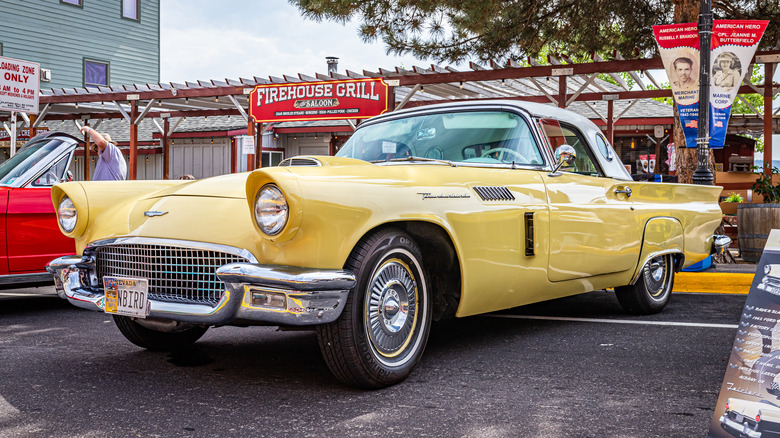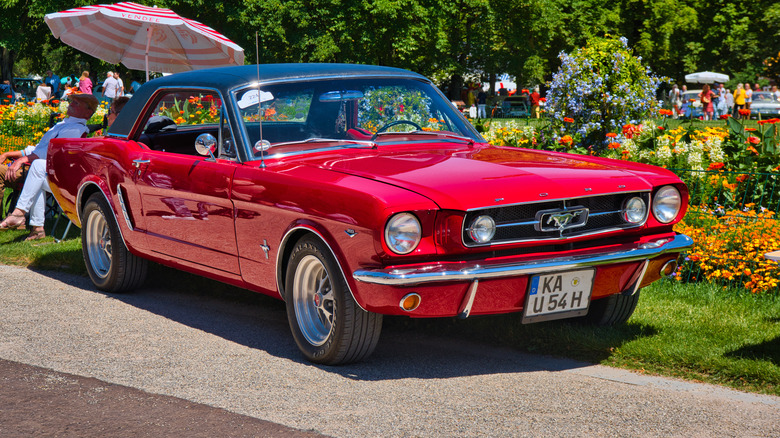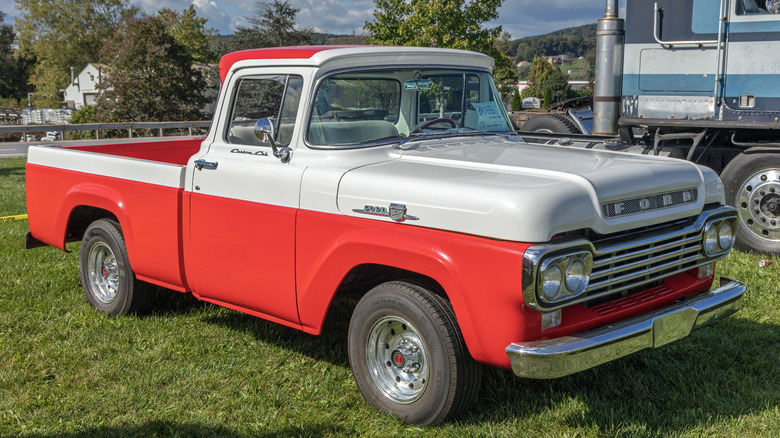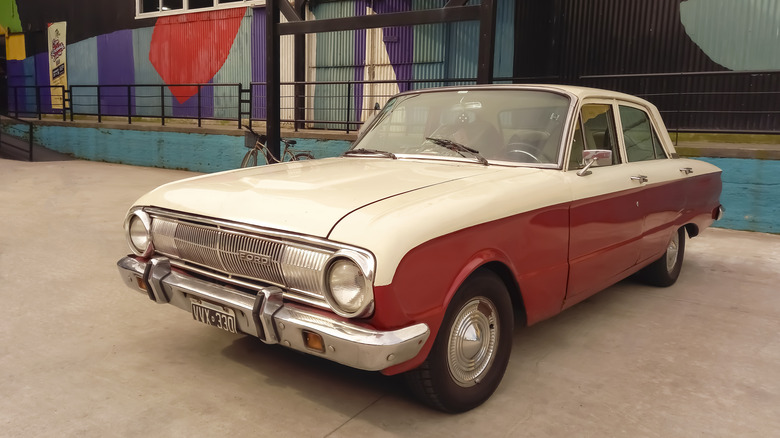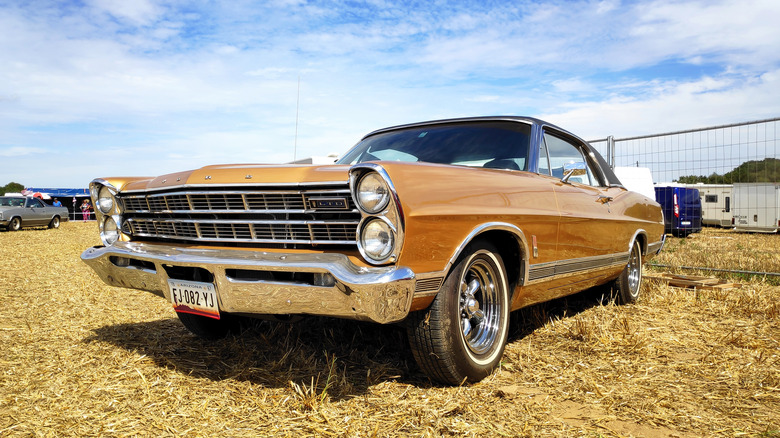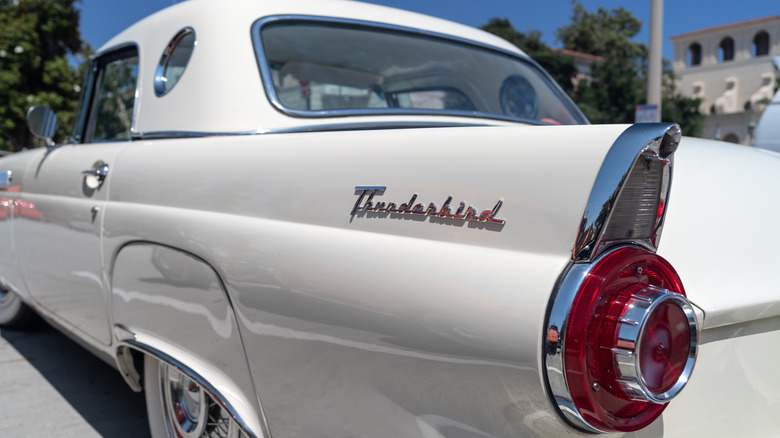5 Classic Fords That Make Great Restoration Projects
Classic cars are a great investment: with fully restored examples often fetching six figure retail prices, classic rides rank with the most potentially profitable luxury collectibles. Good candidates for projects have strong resale markets and aftermarket parts support and are relatively easy to work on due to their uncomplicated design. It's also helpful if they were produced in large numbers, as this means there will be plenty of other owners out there to help you along if you get stuck on a known issue.
Ford has been making vehicles since 1903, and since then has produced such industry icons as the legendary Model T, the multigenerational and powerful Mustang, and the F-150 pickup, which ranked as the nation's best-selling vehicle from 1982 through 2023. Model Ts are certainly easy to work on, but are rarely available for purchase and aren't terribly practical to drive on modern roads. The Mustang and F series pickup make fantastic project vehicles, however, as do many other Fords. The five vehicles on this list are common and affordable on online marketplaces, have active support communities, and are easy to restore and keep running.
Mustang
Ford unveiled the Mustang at the 1964 World's Fair. It was an immediate success. Dealers sold 22,000 on the first day they were available and 700,000 in their first year. The Mustang stayed true to its muscle car origins until the early 1970s, when tightened emissions regulations and the 1973 oil embargo steered American buyers into smaller and more fuel efficient cars. The venerable Mustang has gone through several major changes since then, and there's even an electric version on the roads now. The first generation (1965-1973) is the most desirable, and examples can still be found in in running condition for well under $10,000. The tremendous popularity of the model means a large marketplace for parts, including performance upgrades and new old stock replacement parts.
There are also Mustang clubs across the globe, including more than 170 officially recognized chapters of the Mustang Club of America, where you can commune with fellow Mustang owners and get help for your restoration project.
F series pickup
Ford's first pickup truck was the one-ton 1917 Model TT, which had a stronger frame than the Model T on which it was built and a truck bed built by a third-party manufacturer. Ford began making a complete truck body for the Model T chassis in 1925. Three years later, the company had sold more than a million model TT pickups. The F series debuted in 1948, as Ford and other domestic automakers ramped up civilian production after World War II. In 1953, the F1 became the F-100, and the F2 and F3 were adapted into the new F-250. The F4 became the F350, and larger trucks were absorbed into Ford's commercial line. A stylish redesign of the F series came in 1957, and four-wheel drive was added as an option two years later.
Ford updated the F series again in 1961, 1967, and 1973, and it's that sixth generation that is probably the last that can be regarded as a classic; the F series was updated again in 1979.
'60s and '70s-era F-series pickups in good shape frequently sell for under $5,000 and are remarkably easy to work on. They have roomy engine bays and high ground clearance; in fact, much of the underbody work can be done without the use of a jack or lift. Parts for Ford trucks are common, as are clubs and internet support groups.
[Featured Image by Acroterion via Wikimedia Commons |Cropped and scaled | CC-By 4.0 ]
Falcon
Ford first used the Falcon nameplate in the 1960 model year for its new compact sedan, and added a four-door station wagon and Ranchero pickup hybrid mid-year. Sedan delivery and van models came in 1961, and when the '63 models rolled out in the fall of 1962, a convertible was added to the lineup. Ford kept adding to the Falcon family, with 14 different body styles available for the 1964 model. The introduction of the Mustang in 1965 hurt Falcon sales, especially for the sportier models, but Ford still produced 430,000 Falcons in 1964 and 1965. Ford cut back on the Falcon lineup in 1966, offering two sedans, the wagon, and the Ranchero.
The Falcon only lasted until the middle of 1970, when the badge was moved to the Torino chassis. Those 1970 1/2 Falcons could be had with Ford's 429 cubic inch Cobra Jet V8 that produced as much as 370 horsepower, but only 42 were made with this option. The older members of the Falcon family are not nearly as rare, and can usually be snatched up for a few thousand dollars. Upgrade-minded DIYers will want to target Falcons from the last few years of the run; more than 350,000 were made.
Galaxie
If you have a large garage space and/or someone in your family who owns a gas station, consider a Ford Galaxie as your next project car. This mass of steel first appeared in 1959 in six different versions. All of them had a 118 inch wheelbase and could be bought with an inline six or one of four V8 engine options. The wheelbase grew an inch the next year, and V8s were available in 289, 390, 406, and 427 cubic inch sizes. A major update came in 1965, including stacked headlights, a 240 cubic inch straight six to replace the 223 cubic inch version, a three-link rear suspension in place of the old leaf springs, and new gauges in the dash.
A fourth generation debuted in 1969, with a new array of gas-chugging V8s in 302, 351, 390, 400, 429, and 460 cubic inch sizes. All of these engines enjoy robust aftermarket parts and tech support, although they will mean filling the tank every time you pull out of the driveway: the 429-equipped 1969 Galaxie gets 7.8 miles to the gallon. While the Galaxie will hog your driveway and consume plenty of dinosaur juice, it will be a huge hit at the drive-in theater if your town is lucky enough to still have one, and you'll enjoy the support of a huge Ford V8 parts market and fan base.
Thunderbird
Ford brought the Thunderbird to market in 1955 after presenting it at the previous year's Detroit Auto Show, selling more than 16,000 that year. Sales dropped slightly the next year, but skyrocketed past the 21,000 mark in 1957, perhaps the peak year for American automotive design. The T-bird lasted 11 generations, enjoying some NASCAR success along the way, before Ford dropped the model in 2005.
1955-1957 Thunderbirds are the most highly coveted and will require the most up-front investment, but second (1961-63) and third (1964-66) generation models can often be found for a few thousand dollars and have the space-age styling that will turn heads in the school drop-off line or fast food drive-through. Like with many other Ford models, aftermarket and NOS parts for Thunderbirds are readily available due to the high production numbers, and online and local club support is widespread as well.
